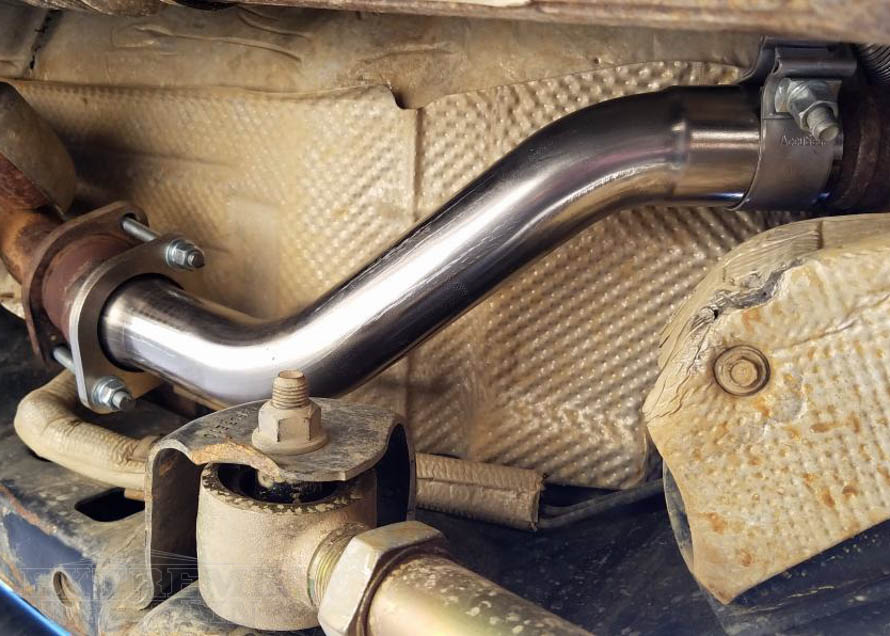Exhaust systems often seem like a complex series of aluminum pipes that twist and turn for no clear reason. In reality, every connection and bend in an exhaust serves a purpose. In this information guide, we’ll discuss the history of mid-pipes through several Wrangler generations. We’ll also explain the difference between catted and non-catted pipes, going into more detail of the exhaust flow loops and loop deletes. In addition, we’ll cover the purpose of exhaust spacers and finally a general overall maintenance recap on how to care and prevent rust on exhaust pipes.
Contents
Shop Wrangler Mid-Pipes
Exhaust pipes are an integral part of a vehicle that releases its waste by-product. They come in different shapes and sizes and have different functions. An efficient exhaust system can improve your rig's overall driving performance as it removes the used gases processed by the engine more efficiently. You can check our wide array of exhaust pipes and accessories here.


